Using his experience from the Great Western Railway (GWR) and the Hughes ‘Crabs’ as a starting point, Stanier developed his own modern moguls a couple of years into his 12 year career at the London, Midland and Scottish Railway.
Once reliving the working lives of Stanier Moguls, we will see how preservation has played out for the sole survivor of the class.
Stanier Class 5 2-6-0 ‘Mogul’
Stanier was headhunted for the job of Chief Mechanical Engineer of the LMS, accepting the offer and taking charge on the 1st of January 1932.
Shortly after his appointment, the Traffic Department requested for 40 more Hughes ‘Crabs’ to be constructed, which were popular Mixed Traffic engines introduced in 1926.
Stanier would eventually go on to build a fleet of modern, lower maintenance engines for the LMS, with his Moguls being one of his first classes.
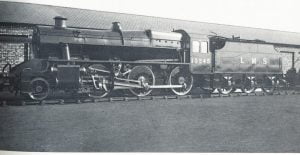
Design and Construction
One of the biggest improvements Stanier wanted to introduce was the Taper Boiler, which initially was planned to be fitted to the 40 more engines requested. The taper boiler would increase boiler pressure 45 lbf/in2 more than the G9HS LMS boiler fitted to the ‘Crab’, so Stanier reduced cylinder diameter by 3 inches to achieve roughly the same Tractive effort. With further adaptations being made to the Hughes design, the decision was made to classify the new engines as a new class, the “Stanier Moguls”.
Notably in the external appearance was their horizontally pitched cylinders, the only Stanier engines to carry this feature. Other differences which could be seen were straight running plates, water top feed and outside steam pipes. The class would be paired with the same tender as the ‘Crabs’, the Fowler 3,500-gallon tenders, as Stanier type tenders appeared after production of the Moguls.
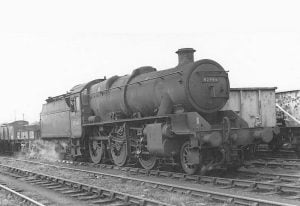
All 40 engines were built under the same lot number of 104 at Crewe Works between October 1933 and March 1934.
The basic dimensions for the class as built include: 2-6-0 wheel arrangement (coupled wheels – 5 foot (ft) 6 (in), leading wheels – 3ft 3in), LMS type 3D boiler pressed at 225 lbf/in2, two cylinders (outside, 18in diameter and 28in stroke), total weight (including tender) came in at 111.3 long tons and tractive effort of 26,290 (power class 4F, later changed to 5MT).
Performance in Service
As Mixed Traffic engines the Stanier Moguls were allocated across the LMS on a variety of duties, from secondary passenger to fast freight trains.
Many members of the class worked alongside the Hughes Crabs, as both classes had the same power classification. After a few years in service, the class was grouped together on the Western Division of the LMS, being common sights at Crewe and Birmingham.
With the introduction of the ‘Black Fives’ in 1934, the Stanier Moguls were used more on freight trains, where their smaller coupled wheels over Black Fives gave them an advantage at this work.
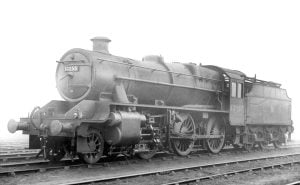
Decline and Withdrawal
By the Mid-1930s, the Black Fives had become the engines of choice for Mixed Traffic haulage across the LMS, with this class numbering just under 500 before the start of World War 2. Despite this, the Stanier Moguls continued Mixed Traffic duties, which they would perform right up until they were withdrawn.
Summer 1963 saw the first engine removed from traffic, this being 42976 (Built as 13276) aged 29. The last engine to be withdrawn was 42954, which had lasted until February 1967.
Preservation
Fortunately, one engine was saved for preservation and has been restored to running order. This locomotive is 13268 (Post 1933 – 2968, BR – 42968).
13268 was brought by Barry Scrapyard in 1967, where it was moved to the famous site with Ivatt 2 46447 and LMS Jinty 47298, both brought as scrap and since been preserved too.
Two years later in 1969, the Stanier Mogul Fund (SMF) was formed, as they knew 13268 was the only member of the class left. In Late August 1973, the SMF had successfully purchased 13268.
Four months later in December 1973, the Mogul was moved to its new home on the Severn Valley Railway. Work on restoration started in Summer 1974. November 12th, 1990 saw 13268 moved under its own steam for the first in nearly 24 years, officially entering traffic on the 20th of April 1991.
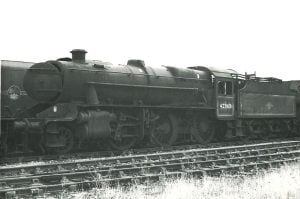
The locomotive has been based on the SVR since then, being a popular engine. During its first boiler ticket, 13268 was paired with a Stanier tender (From 45110) as its own Fowler tender needed repairs. This is the only recorded time a Stanier Mogul has been paired with a Stanier tender as far as the SMF is aware of.
The engine received a number of repairs on its first ticket, including new tyres for the coupled wheels. The last two years of the locomotive’s boiler ticket 13268 hauled several mainline tours across the country. This increased the locomotive’s popularity, leading too several visits to other heritage railways.
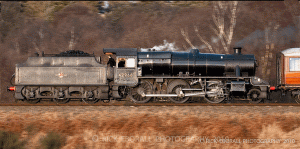
Withdrawal for it’s first overhaul in preservation came in 1998, lasting roughly five years, with a return to service in March 2003. 2010 once again saw 13268 paired with 45110’s Stanier tender while its own had new tyres. Its last boiler ticket expired in Mid-2012, with an overhaul currently in progress. The latest news on this overhaul can be found here.
For more information or to support the Stanier Mogul Fund in overhauling 13268, please visit their website here.
We hope you have enjoyed this week’s Sole Survivor, the last one for LMS design and built engines. Next week we will publish our next issue of the Lost Class series.
Where Next?
News Homepage
For the Latest Railway News
Christmas Present Ideas
Framed Prints, DVD’s / Blu-Ray’s and more in the RailAdvent Online Shop
LocoStop – The RailAdvent Community
Come and share your railway pictures


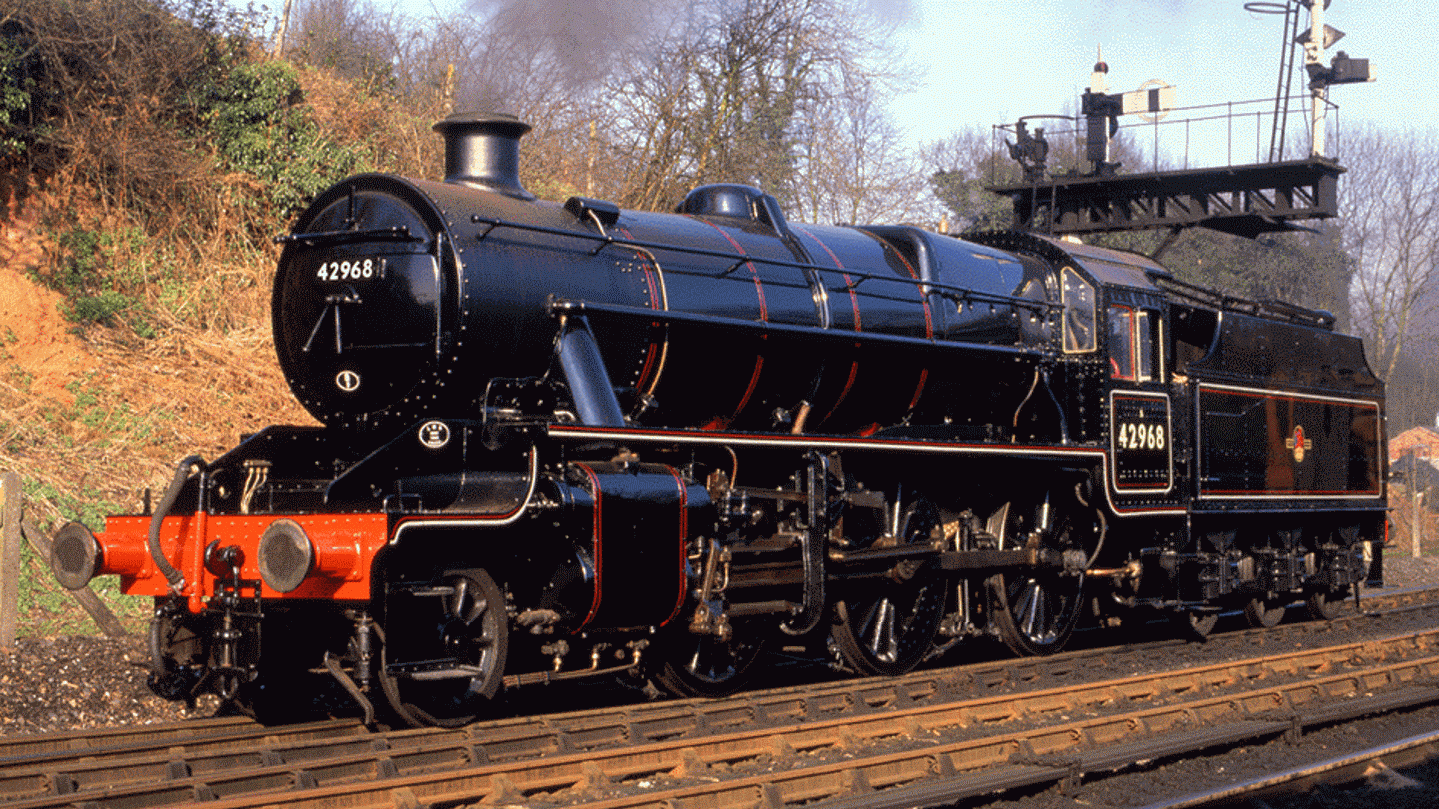



Responses
I I remember this loco being based at Crewe south probably worked on it many
times we always called them tapered boiler crabs..I started on the Railway on
1947 and retired in 1994.
at
[…] Shortly after his appointment, the Traffic Department requested for 40 more Hughes ‘Crabs’ to be constructed, which were popular Mixed Traffic engines introduced in 1926. Stanier Class 5 2-6-0 ‘Mogul’ steam locomotives – Sole Survivor […]